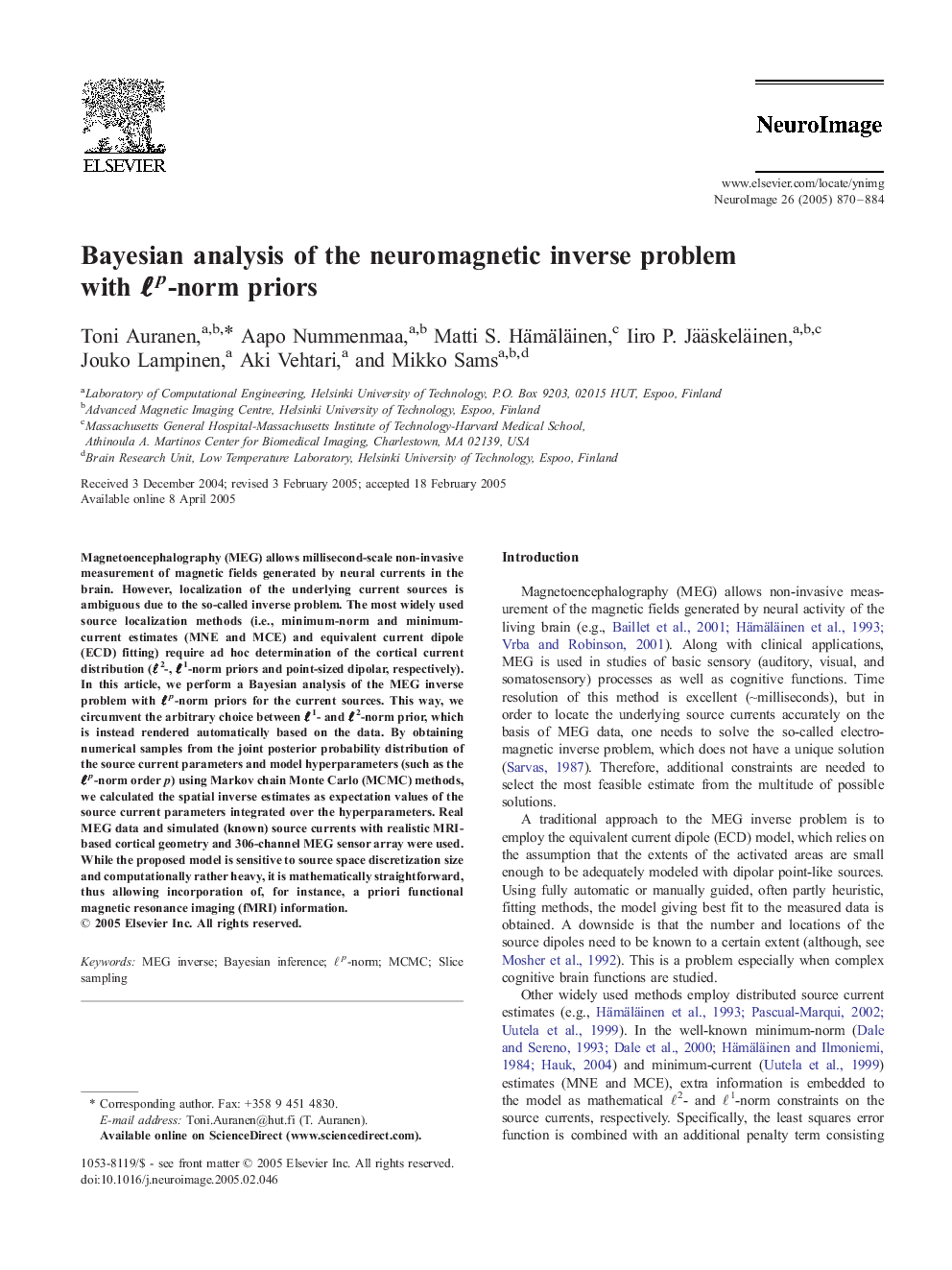| Article ID | Journal | Published Year | Pages | File Type |
|---|---|---|---|---|
| 9198381 | NeuroImage | 2005 | 15 Pages |
Abstract
Magnetoencephalography (MEG) allows millisecond-scale non-invasive measurement of magnetic fields generated by neural currents in the brain. However, localization of the underlying current sources is ambiguous due to the so-called inverse problem. The most widely used source localization methods (i.e., minimum-norm and minimum-current estimates (MNE and MCE) and equivalent current dipole (ECD) fitting) require ad hoc determination of the cortical current distribution (â2-, â1-norm priors and point-sized dipolar, respectively). In this article, we perform a Bayesian analysis of the MEG inverse problem with âp-norm priors for the current sources. This way, we circumvent the arbitrary choice between â1- and â2-norm prior, which is instead rendered automatically based on the data. By obtaining numerical samples from the joint posterior probability distribution of the source current parameters and model hyperparameters (such as the âp-norm order p) using Markov chain Monte Carlo (MCMC) methods, we calculated the spatial inverse estimates as expectation values of the source current parameters integrated over the hyperparameters. Real MEG data and simulated (known) source currents with realistic MRI-based cortical geometry and 306-channel MEG sensor array were used. While the proposed model is sensitive to source space discretization size and computationally rather heavy, it is mathematically straightforward, thus allowing incorporation of, for instance, a priori functional magnetic resonance imaging (fMRI) information.
Keywords
Related Topics
Life Sciences
Neuroscience
Cognitive Neuroscience
Authors
Toni Auranen, Aapo Nummenmaa, Matti S. Hämäläinen, Iiro P. Jääskeläinen, Jouko Lampinen, Aki Vehtari, Mikko Sams,
